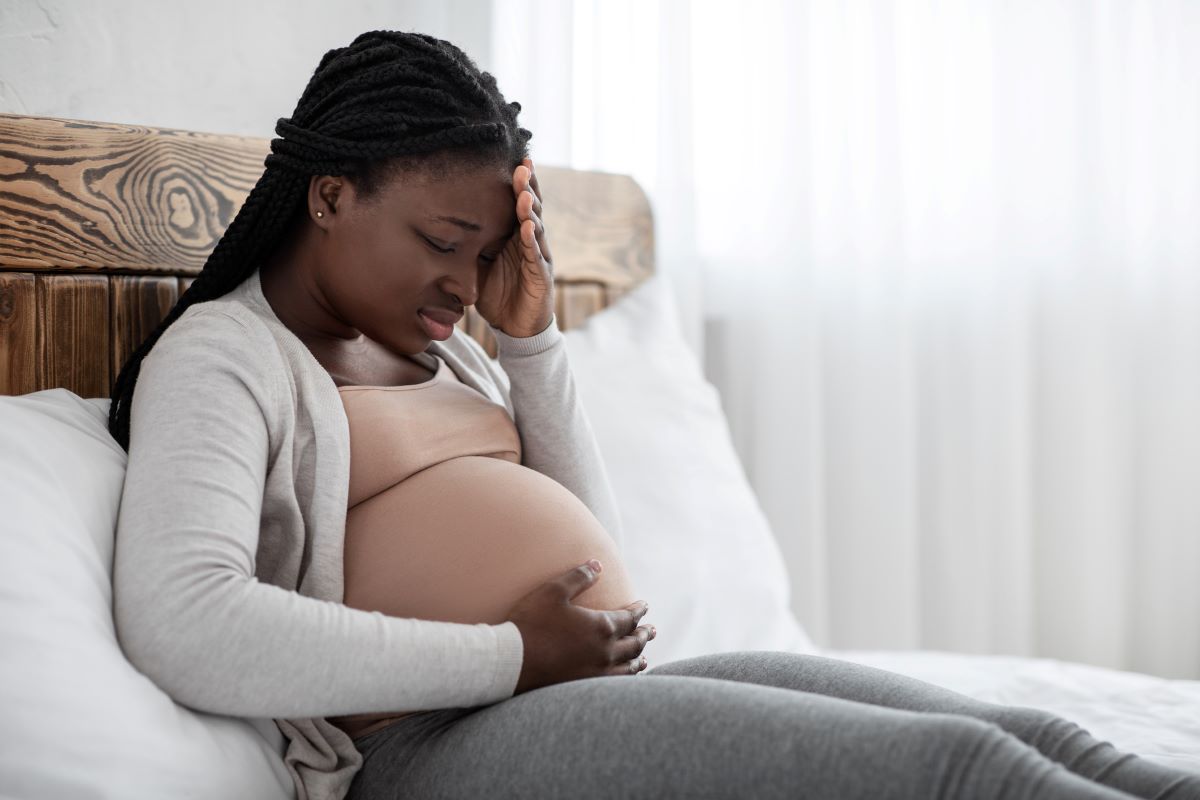“I wanna be a good mother like I know I can be, and I want to keep my child, and I don’t want to be on the streets with my child.”
— Tanya, a pregnant homeless woman tears up in a candid interview with Invisible People.
According to the Urban Institute, pregnancy and homelessness have a strong relationship. This is due, in large part, to the fact that becoming pregnant increases the risk of becoming homeless for many low-income individuals.
For some soon-to-be-moms, the plus sign that appears on a positive pregnancy test symbolizes economic disparity just as much as it symbolizes joy. Mothers in unstable housing conditions experience a collective internal conflict as their baby bumps grow and uncertainty about what to do settles in.
Many want to keep their babies but fear they will wind up on the streets. Those already homeless have more immediate fears, such as impending violence, dehydration, and starvation, unfathomable unpleasantries they don’t want their babies to witness or experience first-hand.
Yet, nothing is more traumatic for infants and families than the separation of mother and child. Perhaps not even a life on the streets. This is the conundrum facing roughly half of women residing in the homeless shelter system.
A small survey published by the Covenant House found that approximately 44% of homeless women between 18 and 25 report pregnancy, parenthood, or some combination of the two. And on the heels of the deeply-rooted homeless and housing crisis looms another underreported issue – an infant health crisis.
A new report explains how these three crises intertwine.
Mission-Driven Research: The Healthy Parents Healthy Babies Report Addresses the Homeless Crisis and the Infant Health Crisis Simultaneously
The Healthy Parents Healthy Babies Report strives to improve birth outcomes for pregnant people who are already homeless or teetering on the brink of homelessness. The project is part of the “Framework for an Equitable Homelessness Response” and is a collaborative effort brought forth by:
- The National Low-Income Housing Coalition
- The National Coalition for the Homeless
- The Center on Budget and Policy Priorities
- The National Homelessness Law Center
- The Urban Institute
- Barbara Poppe and Associates
- Matthew Doherty Consulting
- The Housing Narrative Lab
- The Housing Justice Collective
- The National Alliance to End Homelessness
- The National Health Care for the Homeless Council
The above-listed nonprofit organizations gained unparalleled insight into the growing problem of pregnancy and homelessness by utilizing a Lived Experience Committee, which consists of five individuals who endured pregnancy and varying forms of housing instability.
Identifying Problems through Personal Perspectives: The Lived Experience Committee Provides Real-Life Insight
“Centering the voices of people who have experienced pregnancy while housing unstable in developing and determining these recommendations was foundational for this work,” said Barbara J Poppe, Executive Director of the US Interagency Council on Homelessness during the Obama Administration’s 2010 term.
To accomplish this, Barb and her devoted research associates enlisted the aid of five former expectant mothers who had lived through homelessness and pregnancy. Together, they form the Lived Experience Committee, or LEC, for short. This committee consists of the following members:
- Cici Iverson
- Rodrika Buckler
- Ariana Rael
- Destiny
- Julia
While each committee member’s experience was unique, several shared obstacles were noted. Some of the key findings from this study show that homeless pregnant women:
- Have a great deal of difficulty accessing prenatal care
- Struggle to maintain overall health due to inadequate sleep and lack of access to nutrition
- Suffer insurmountable stress and anxiety
- Are concerned about meeting their baby’s basic needs
Whether living in a homeless shelter, a tattered tent, or an automobile, expecting mothers enduring homelessness live in perpetual fear.
Will they be able to find employment or affordable childcare? Can they co-parent while couch-surfing? Is there a safe place to stash the infant’s supplies such as breastmilk, clothing, and medication?
One committee member named Julia shared the constant stress of sharing a refrigerator and a dorm room with total strangers, agonizing over whether her breastmilk or her baby would be safe from whoever opened the curtain in their quarters and the door of the communal fridge.
Another committee member named Destiny claimed she felt “trapped by the system” as she slept in a cramped shelter room, trying to console a crying infant and simultaneously battle the failing socioeconomic system. To qualify for monetary assistance, Destiny was forced to place her co-parent on mandatory child support and was ultimately penalized for finding a job and getting a raise since the increased income disqualified her for subsidized rent, creating a vicious cycle of poverty and mistrust.
Other issues, like losing custody of previous children or being unable to rent an apartment due to criminal records or financial woes, also plagued these would-be mothers.
One common theme was racial disparities, as both homelessness and decreased maternal health disproportionately impact communities of color. This report provided first-person perspectives from communities of color whose families have historically and presently been torn apart as systemic inequities plague the healthcare and housing systems all at once.
The uphill battle of pregnancy and homelessness is seldom won. But the good news is that this study has produced more than just data. It is also brimming with research-backed recommendations.
Recommendations for Improved Birth Outcomes
Findings from this study and the overarching “Framework for an Equitable Homelessness Response” project suggest that preventative measures can drastically improve infant health outcomes. This report presents eight recommendations with these outcomes in mind. They are as follows:
- Preventing and mitigating trauma by building systems of support with programs that include harm reduction and trauma-informed care.
- Providing an adequate combination of housing and income for the entirety of the perinatal period. This includes the pregnancy and at least one year of post-birth assistance.
- Building affordable housing and investing in historically disinvested or impoverished communities.
- Providing renter protections with an emphasis on ERA (Emergency Rental Assistance).
- Creating a step-down benefits system that doesn’t immediately sever aid when a person’s income increases.
- Extending postpartum Medicaid coverage beyond the initial pregnancy term.
- Raising awareness and making programs for expecting homeless mothers accessible.
- Building an all-encompassing 24-hour support system for new moms experiencing housing instability.
Alert Your Legislators: Pregnant Homeless Women Need More Protections
No expecting mother should be without a home, and no infant deserves to be homeless at birth. Please alert your legislators that maternal birth outcomes can be improved by drafting laws that increase housing stability in vulnerable communities.













